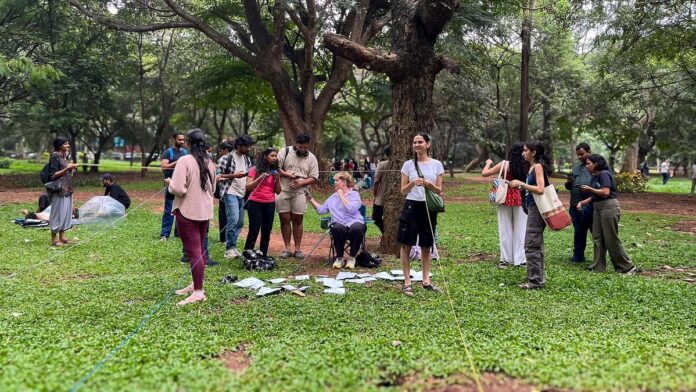Cables tinsel the ruins of the Central Telegraph Office in Bengaluru, skimming past its worn walls and shuttered windows before losing themselves in the dense foliage of an adjoining ficus tree with heart-shaped leaves softly fluttering in a mild afternoon breeze.
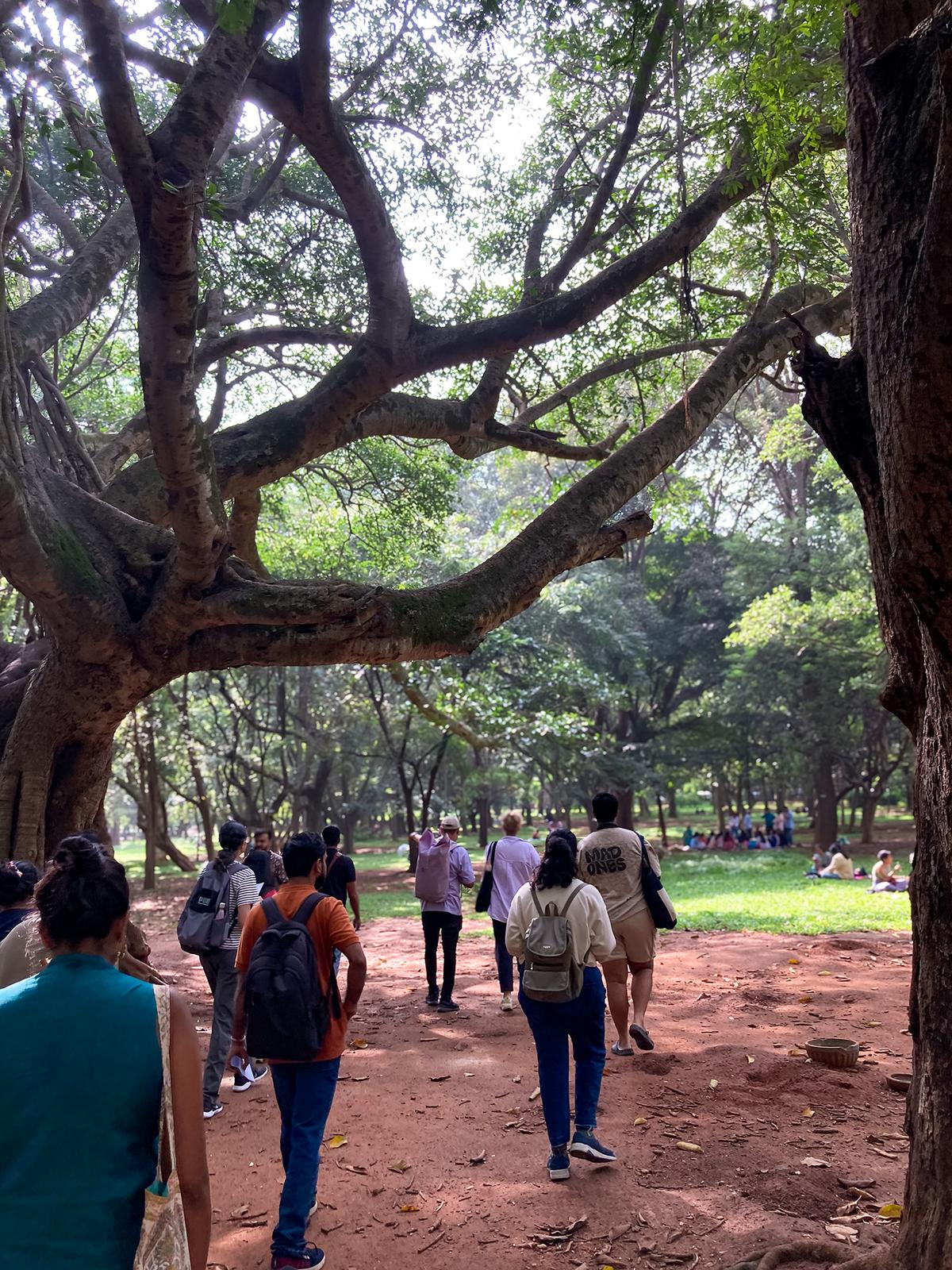
Walk into the park.
| Photo Credit:
Sudha Palepu
“Follow any cable with your pen,” says multi-disciplinary Berlin-based designer and artist Iz Paehr, who is co-leading a network walk at Cubbon Park titled “Writing Telegrams to Fungi, Sending Bytes across Trees” along with Bengaluru-based artist and fungiculturist, Biplab Mahato.
Unfurling the zine handed to us at the start of the walk, we use brightly-coloured markers to draw squiggly cables across the page, starting from a sepia-toned vintage photograph of the telegraph office. Iz, who goes by the pronouns they/them, explains, “This building is still standing, though it shut down in 2013,” they say, pointing out that telegraphy, which started in Bengaluru in 1854, was an instrument of colonial power and control. “The British colonised lands via telegraph cables, something known as the All Red Line.”
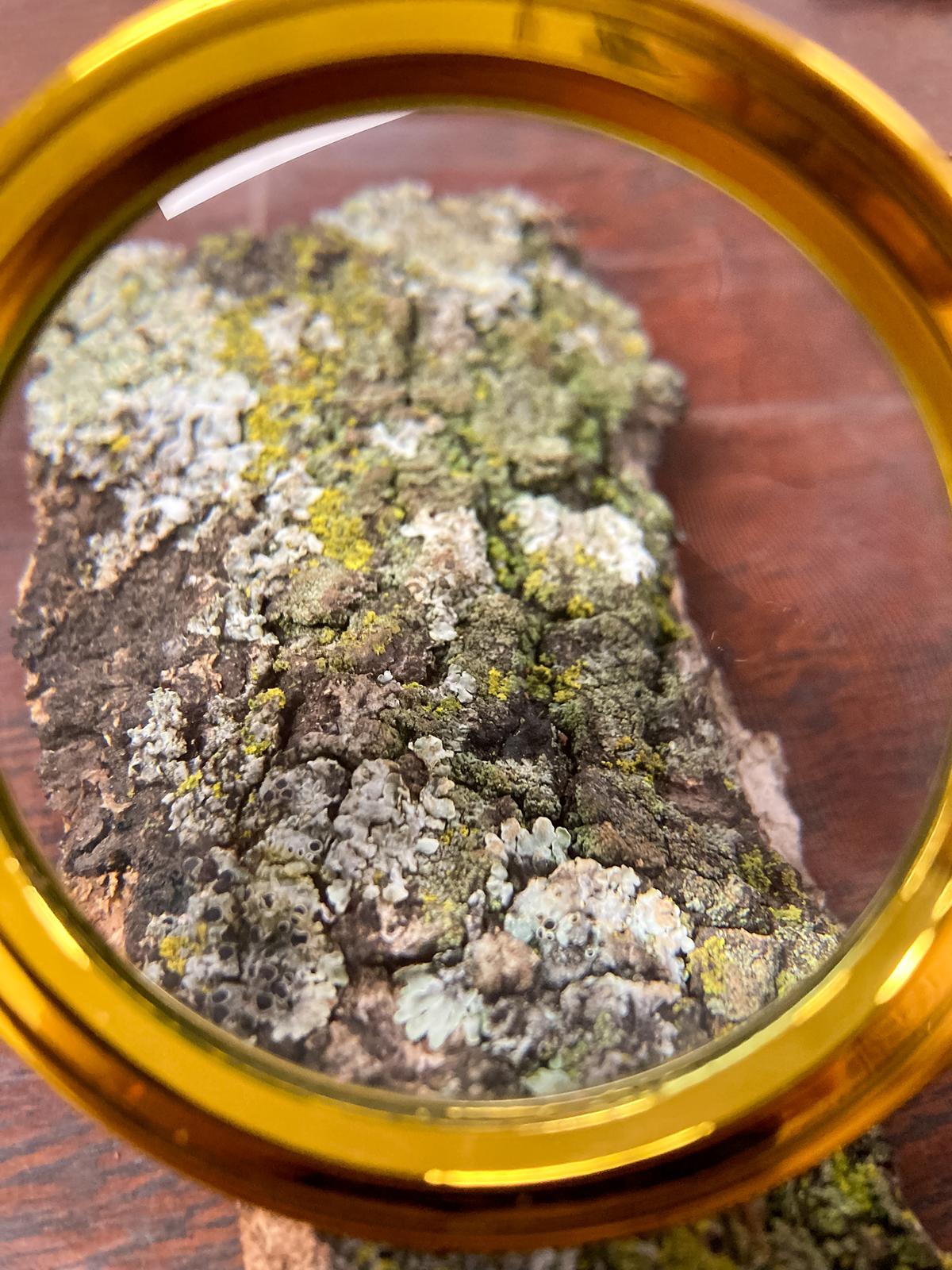
Looking at lichens.
| Photo Credit:
Sudha Palepu
Connections
More such titbits of information emerged over the two-hour-long walk that started at the telegraph office, went into Cubbon Park and ended at the Art in Transit studio at the Cubbon Park metro station.
On this walk, participants attempted to trace networks of all sorts, “from digital devices that connect (some of) us to global communication structures, to the fine threads of mycorrhizal networks—networks comprising fungi and plants in a symbiotic relationship—that interconnect the very trees that in turn hold internet cables,” as the event’s release states.
Whether it be how the internet is transmitted by fibre optic cables running through the world’s oceans, the importance of mycorrhizal networks for optimal ecosystem functioning or how the internet infrastructure continues to be skewed towards the global North, the layered, nuanced nature of these networks were constantly reinforced during the event, both by knowledge sharing and through a series of activities.”
“I think there are some connections between the world wide web and what is sometimes called the ‘wood wide web’, a metaphor used to describe how mycelium (the root-like part of a fungus with its branched, tubular filaments) helps nutrients to pass between trees,” says Iz, who is deeply concerned with questions of material, touch, access and infrastructure. “Because the metaphor is so present, it became a way of bridging these networks, not to equate them but of thinking of them next to each other and seeing how they differ.”
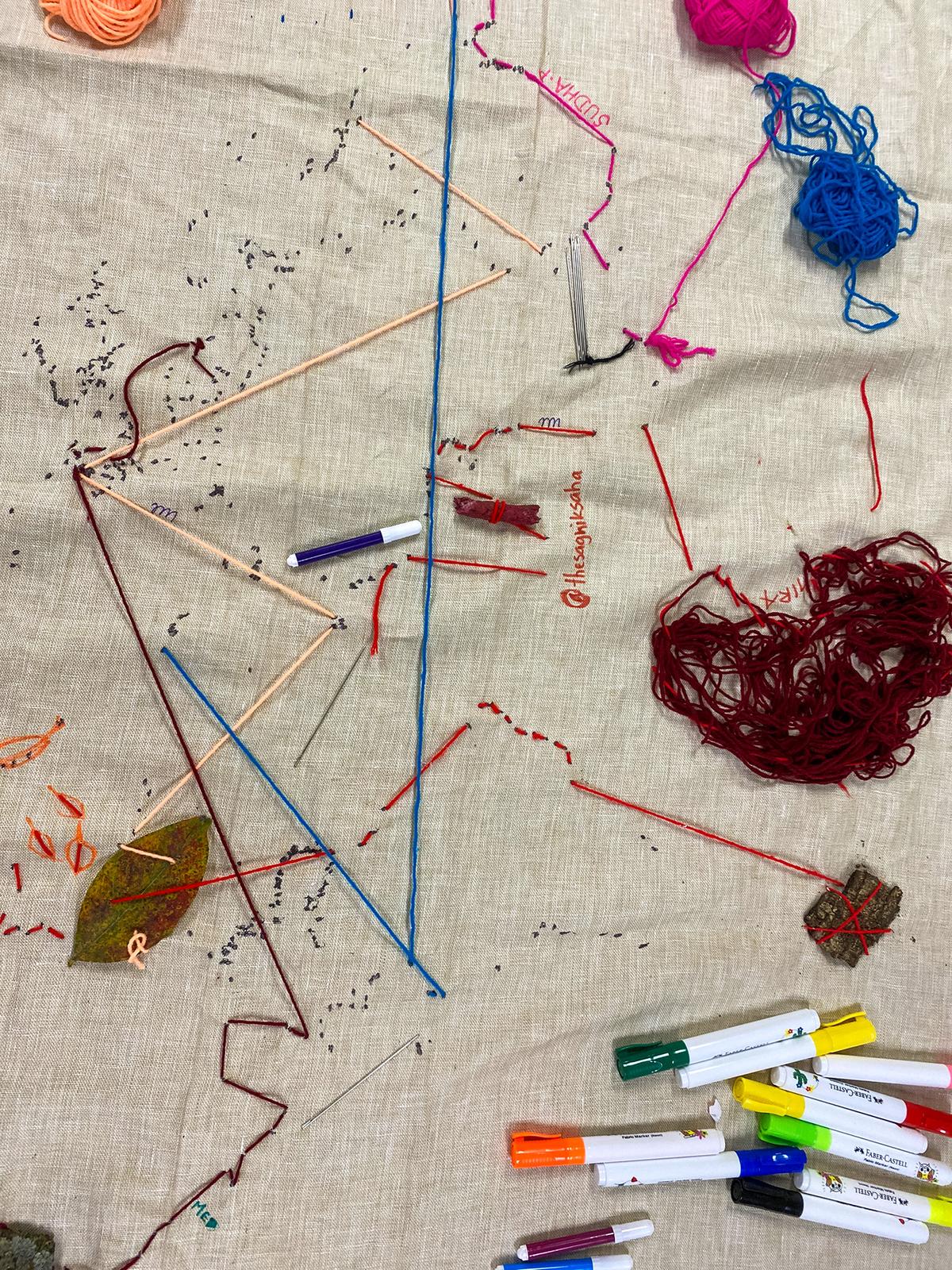
Stitching Networks
| Photo Credit:
SPECIAL ARRANGEMENT
How the idea emerged
The idea for the walk stemmed from a conversation between Biplab and Iz that took place sometime in October. Iz, whose bio describes them as an interdisciplinary designer in love with disability access, internet infrastructure, and the subversive potential of play, arrived in India that month for a residency programme called bangaloREsidency@The Archives at NCBS (National Centre for Biological Sciences). As part of this programme, which has been conceived as a long-term collaboration between the Goethe-Institut /Max Mueller Bhavan Bangalore and various cultural spaces and partner institutions in the city, Iz chose to work at the Archives at NCBS, examining metaphors and materials of networks, one of their key focus areas.
“I was invited to the residency’s orientation, where we had the opportunity to interact with all the artists and explore possibilities for collaboration,” recalls Biplab, the founder of Shroomin’, an urban mushroom farm. As someone passionate about fungi, he is deeply fascinated by the concept of mycorrhizal networks—the way fungal hyphae facilitate inter-plant connections. “I found Iz’s work closely connected to this world,” he says, drawing again on the idea that the densely networked internet shares similarities with the ‘wood wide web.’ “Iz’s past works also focus on plant networks,” he adds.
After several discussions, they decided to collaborate, quickly realising “that we wanted to do a hands-on kind of workshop or walk to invite people to experience these concepts that we are talking about and researching in a quite direct and haptic way,” says Iz, pointing out that internet infrastructure is often understood as a far-away, immaterial thing not something one can actually touch.
Similarly, while people know about mushrooms, the fruiting body of mycelium, they aren’t aware of the underlying vegetative structure made up of thread-like hyphae, says Iz. “That’s why we thought a walk situated in Cubbon Park, which brings together so many of these networks, would be interesting.”
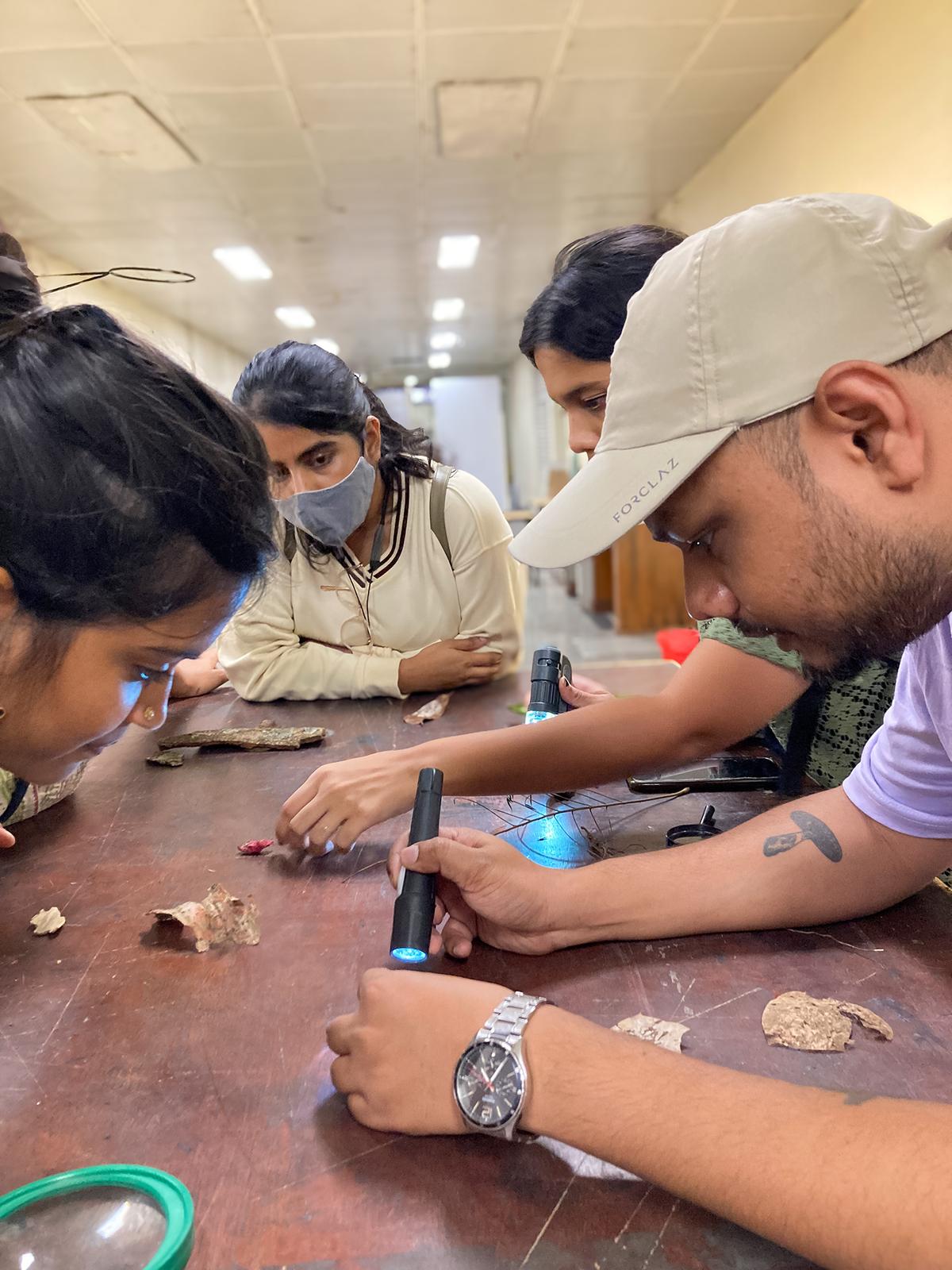
Looking at lichens.
| Photo Credit:
BIPLAB
Sticky networks
On Friday, November 22, an exhibition titled Sticky Networks will be held at the Archives at NCBS, showcasing some aspects of the walk and other pieces of work Iz created during the residency. Additionally, Biplab will showcase spore bags and mycelium plates at the exhibition — items most people have likely never seen.
“We largely think of fungi as something that spoils food left outside,” he explains, emphasising that the communication networks created by these organisms are still relatively unknown. The mycorrhizal network, composed of tiny mycelium filaments, decomposes organic matter and returns essential minerals to the roots of trees and plants. “They’re the end but also the beginning because they give life back,” says Biplab.
Iz says that the term sticky in Sticky Networks relates back to the gutta-percha tree, a latex-secreting plant native to Southeast Asia. “This latex was used to insulate telegraph cables for the global telegraph network, a process that British colonisers largely initiated,” they say, adding that the telegraph network was only made possible because of that tree sap. However, the exploitation of the tree for latex almost brought it to extinction. “So, the metaphor for stickiness came to me quite early in the process.”
Even the telegraph system, which laid the foundation for modern communications systems, makes its presence felt today. For instance, when it comes to distribution, submarine cable maps often resemble old telegraph maps, reinforcing the same biases in communication infrastructure. “99% of internet traffic traverses through submarine cables, which are distributed across the globe, but they are not done in an equitable way as the landing stations are predominantly above the equator, in the global North”, says Iz. ”Some things still stick around that we can’t quite get rid of or away from quite yet.”
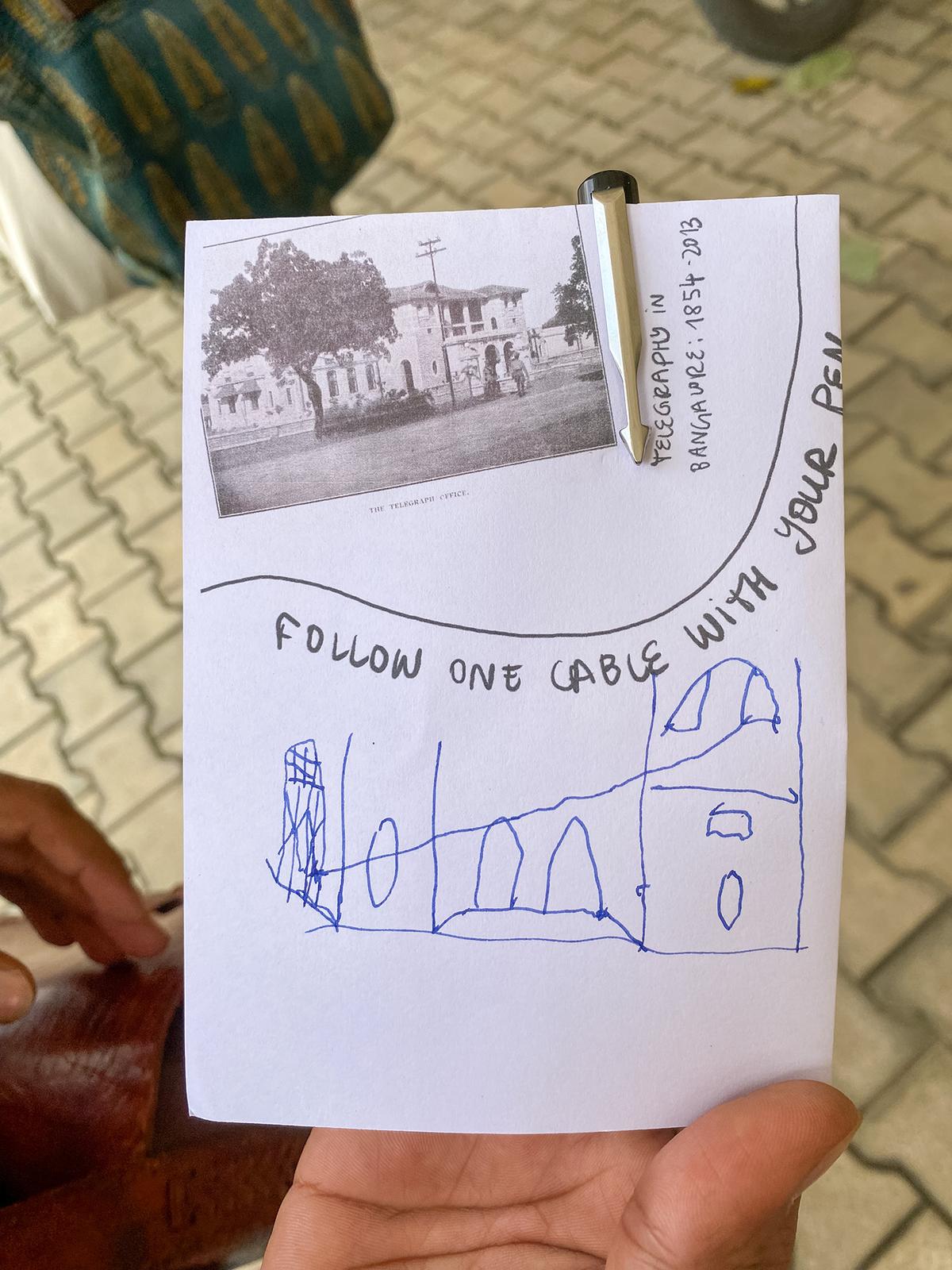
Follow one cable.
| Photo Credit:
SPECIAL ARRANGEMENT
Research and more
Iz says that a large part of their research occurred in the Archives, where they stumbled across actual telegrams. “At the Archives at NCBS, I looked at telegrams, their visual language, what they look and feel like, when were they sent, often when someone died, or there was a birth… for important occasions.” They also spoke to historians of science and travelled into the city to physically examine sites like the old telegraph office. “I’ve done a lot of walks through different streets to find cables, as well as to see how birds, bats, and ants interact with them in the trees that hold the cables,” they say. “I think these connections between different kinds of networks, like the tree network that literally holds the internet network…all of that really piqued my interest.”
The final outcome of this residency is a website artwork where different stories relating to networks will be projected at the Sticky Networks exhibition at the Archives “so people visiting the exhibition will experience this website and the different stories that it holds,” says Iz. There will also be a few physical pieces, including a fabric work printed with a Google Maps screenshot of two streets in India that Iz walked through to sketch the internet cables that they could see. “I’ve embroidered them on top of that fabric,” they say.
Additionally, some exhibits inspired by the walk will also be showcased, including a lichen collection and a hotspot constellation. “I think in the park, we did all that in a very participatory way and now are turning the works into installations for the exhibition,” says Iz. “I hope, through the metaphor of stickiness and haptic clarity of everything, people can still get in touch with it.”
Sticky Networks will be showcased at the Archives at NCBS on Friday, November 22, 2024, between 5.30 and 7.00 p.m.
Published – November 22, 2024 09:00 am IST
